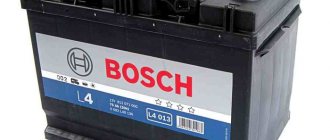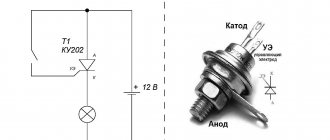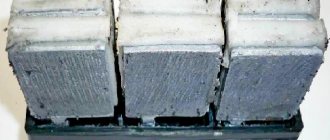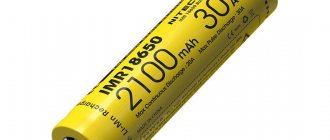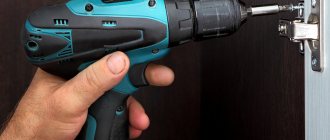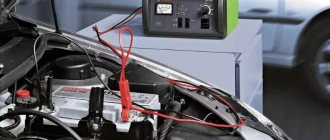Most batteries work without maintenance, but if you want your device to last as long as possible, its condition must be monitored. One of the most necessary devices for this is a hydrometer, a device that allows you to estimate the density of the electrolyte in the battery.
Description of the aerometer device
This is a very simple and inexpensive device that is desirable for every car enthusiast or anyone who regularly deals with batteries for other reasons. It works simply - it allows you to see the ratio of sulfuric acid to water. The more of the first, the higher the degree of acidification of the battery fluid.
Design
Externally, the hydrometer resembles a pipette with a bulb for comfortable and safe liquid collection. The hydrometer itself (scale) is located inside the pipette. When trying to analyze the acidification of a liquid, it gets inside the pipette and the result is visible on the scale. There is no need to interact with acid.
What is a hydrometer used for?
To check if the battery is charged. If you start any work with a faulty battery, this can lead to damage to the devices. The electrolyte density level must correspond to the norm - not fall below and not rise above.
Selling brands of hydrometers in Russia
The choice of brands of hydrometers on the market in our country is quite large, but in fact they represent almost identical devices. The only differences are in the quality of the material used to make the devices.
Hydrometer IP1
What stands out from the general monotony is the IP1 hydrometer, which is made not with a standard glass hydrometer, but with a set of plastic sticks, opposite which the density value is written on the body. After filling the cavity of the device with electrolyte, the sticks float up and the density value is read on the scale from the one that floated last.
The measurement limit of this device is from 1.19 g/cm3 to 1.31 g/cm.
The scale division value is 0.02 g/cm.
Hydrometer IP1 - “Density indicator - 1” is not an entirely accurate device, but it is quite common among motorists, probably due to its low cost (approximate cost in stores is 100 rubles) and compactness.
Next, you can consider hydrometers costing from 100 to 250 rubles. There are quite a lot of brands of devices in this range.
Hydrometer Orion AR-02
Against the backdrop of all this diversity, the products already familiar to us from the series of chargers from the St. Petersburg enterprise NPP ORION SPB LLC, the Orion AR-02 hydrometer, stand out.
This is the only device for which I found instructions. You can read and download it here.
The principle of operation, safety precautions and the measurement process are described above, let's see what the rest of the specimens look like in the pictures and a short video about some of them.
Hydrometer for electrolyte Autovirazh AV-9901
Hydrometer for electrolyte Sparta 549125
Reviews on the Internet about the Sparta 549125 hydrometer are very decent, apparently the product is made with high quality.
Electrolyte hydrometer SKYBEAR 623000
There are not many models of imported hydrometers on sale, but you can find the following:
JTC-1039 BATTERY TESTER
Such hydrometer models are a little more expensive; their cost will vary from 300 to 600 rubles. They are compact and ergonomically designed. It’s nice to hold such a device in your hand, and you don’t have to assemble it to disassemble it, which is of course convenient.
Hella Hydro Volt
Hella Hydro Volt is a device for measuring density of fairly high quality. Compact, interesting, it has a pear built right into the body. As the stores write: “This model is highly accurate, the measurement error does not exceed 1 percent.”
The price for this device ranges from 800 and even up to 1400 rubles, according to online stores.
I decided to measure the density of the electrolyte.
Hydrometer (Greek) - in physics, this is the name of a device that serves to determine the density, and therefore the specific gravity of bodies.
The device of the Hydrometer is based on the hydrostatic law, according to which each body floats in a liquid so deeply immersed in it that the weight of the liquid displaced by it is equal to the weight of the entire floating body (in this case, the body means a hydrometer).
Types of aerometers
This device is used not only by motorists - it is used to analyze various fluid indicators in many areas. Drivers and auto mechanics use hydrometers to measure the density of electrolyte (if they use serviceable batteries) and antifreeze.
There are also devices that are practically not used by the average car enthusiast or the owner of a battery for other purposes - gasoline, antifreeze and hydrometers for brake fluid. Such devices can often be found in auto repair shops.
Other types of hydrometers:
- Alcoholic. Used to check the quality of alcoholic beverages, as well as the alcohol strength.
- Lactometer. It is needed to determine the fat content of milk and is in demand in the food industry and farming.
- Salinity and sugar hydrometers. Also used in the food industry, but more niche.
IMPORTANT! If you need to check the performance of your battery, then you need to find and purchase a hydrometer for the battery. Other types of devices will not work, since there will be no chemical reaction to hydrochloric acid. There should be no problems with the search, since these devices are among the most popular.
Why are they needed and what are they?
Hydrometers are used to measure the specific density of liquids and, according to their purpose, are often called density meters. Existing devices today are divided into two classes:
- Constant volume.
- Constant mass.
The operation of devices of both classes is based on Archimedes' law, although they measure density using completely different methods.
Constant volume devices
The classic densitometer of this type is a small cup or a hollow ball with a cup, on the side of which there is a line. To measure, a cup (ball) is lowered onto the surface of the liquid and, using different-sized weights included in the kit, the device is submerged to the line. Then the total weight of the weights is calculated, which is converted into specific density using a special table. Constant mass hydrometers have high accuracy, are simple in design, and cheap, but due to the rather painstaking and lengthy measurement process, they have become widespread only as laboratory ones.
Hydrometer for measuring the characteristics of alcohol-containing liquids (spirometer)
Constant mass density meters
The device is a sealed flask - a float, in the lower part of which there is a weight of a certain and constant mass. The upper part of the float is graduated in certain units. Since the volume and mass of the device are constant, the depth of its immersion directly depends on the density of the liquid. To measure, the hydrometer is immersed in liquid and the readings are read directly from the scale. Obviously, working with such a device is much easier , and it is for this reason that constant mass density meters, or otherwise densimeters, are widely used in almost all areas, including household ones.
We recommend: In what order to connect the battery to the car
A constant mass hydrometer sinks the more, the denser (heavier) the liquid
There is another type of hydrometer for batteries, which have a set of floats of the same volume, but different weights. Measurement with such a device is carried out by immersing all the floats in liquid at once, and the density is determined by the number of floats/sanks.
This electrolyte density meter uses 7 floats, each of which reacts by floating only to its “own” density
Densimeters of this type have low accuracy and are usually called density indicators.
How to use a battery hydrometer
If you have an electric model, then no problems will arise - the user only needs to dip the device into the solution, use the bulb and wait until the device produces the result. There may be some difficulties with a mechanical hydrometer.
IMPORTANT! Before measuring the density with the device, prepare the battery - open the lid and put everything you need within walking distance, so that you will not be distracted from checking later.
Instructions for checking the density of the electrolyte in the battery (model without electronics with a bulb):
- Inspect the hydrometer to make sure it is clean and ready to use.
- Using a bulb, pump the liquid to the scale in a glass or plastic flask - press it several times. Repeat until the float with the scale (or other elements, if the model contains a scale not on the float) floats.
- Now you need to wait a little until the level of the battery fluid stabilizes - with the correct actions on the part of the user, the float should “stand” motionless and not touch the walls.
- Holding the device in the same stationary position, read the indicators from the scale - this is your result.
Hydrometer design for measuring electrolyte density
Since we are interested in the electrolyte, let’s look at how a hydrometer for a car battery is designed and works.
Its design is extremely simple:
- tube or flask made of glass or transparent plastic;
- pipette;
- rubber bulb;
- the hydrometer itself.
A pipette for collecting electrolyte, made of rubber, is placed on one end of the flask (so as not to damage the separators and plates in the jar), a hydrometer is placed inside, and a bulb is placed on top, with the help of which liquid from the battery is pumped into the flask. The hydrometer itself is a glass flask sealed on both sides with a lower wide and upper narrow part. A ballast weight made of metal or other material is installed at the bottom, and a scale is applied at the top, adjusted in such a way as to indicate the density of the electrolyte.
We will tell you how to use a hydrometer bulb a little later, mentioning that there are also many varieties of automobile hydrometers, but they all use the same principle, based on Archimedes’ law - a glass flask is immersed in an electrolyte, and on a scale you can track what density this immersion corresponds to.
Criteria for choosing a good tool
It all depends on how often you plan to use the battery hydrometer. If checking the battery is rare for you, then a simple hydrometer will suffice - there is no point in spending money on an expensive device. If regular, including preventative, battery checks are a professional necessity for you or a desire to keep the battery in the best possible condition for as long as possible, you should allocate a little more time to the choice.
The first thing you should decide on is the type of device, then its method of measuring density (reference to weight or volume). Then you can pay attention to the manufacturer (relevant only for electrical appliances) and at the very end - to the price. It is not advisable to take a hydrometer that is cheaper than 150-200 rubles (or 500 for a model with electronics).
Coolant
Antifreeze is an important component of the radiator. Antifreeze has two main functions:
- Protection of a running engine from overheating.
- Preventing coolant from freezing in winter.
The industry has standards for the production of antifreeze. The following classes are distinguished:
The first two groups are the hardiest, because the substances they contain are characterized by high concentrations. This allows the liquid to retain its properties even at negative temperatures of 80 degrees Celsius.
The G11 type has more modest performance - it can withstand up to 40 degrees of cold. It is also characterized by a green or blue color.
Antifreeze also functions as antifreeze, but is intended for domestic cars. It is also divided into classes. They produce three main types:
The numerical value demonstrates the critical negative temperature at which the antifreeze remains operational. For example, for grades A40 and A65 - minus 40 and 65 degrees, respectively. AK is a concentrated composition that should be diluted with water. The characteristics of the mixture depend on the ratio. Let's say, with an equal proportion (50% concentrate in liquid), antifreeze can crystallize at approximately minus 30 degrees Celsius.
Examples of popular hydrometer models
These are fairly cheap and widespread devices - there is no point in comparing brands and manufacturers. The ease of use of any hydrometer that you can find in online stores by name or article number will be approximately the same.
Current models:
- SPARTA 549125 is a simple and cheap device, nothing superfluous, suitable for rare use.
- Rockforce RF-9G4005A - similar in functionality to the previous version, but better made, using higher quality materials, and less susceptible to wear.
- AUTOPROFI Battery BAT/TST-118 is a more advanced model with an automatic scale and pointer, without a float.

